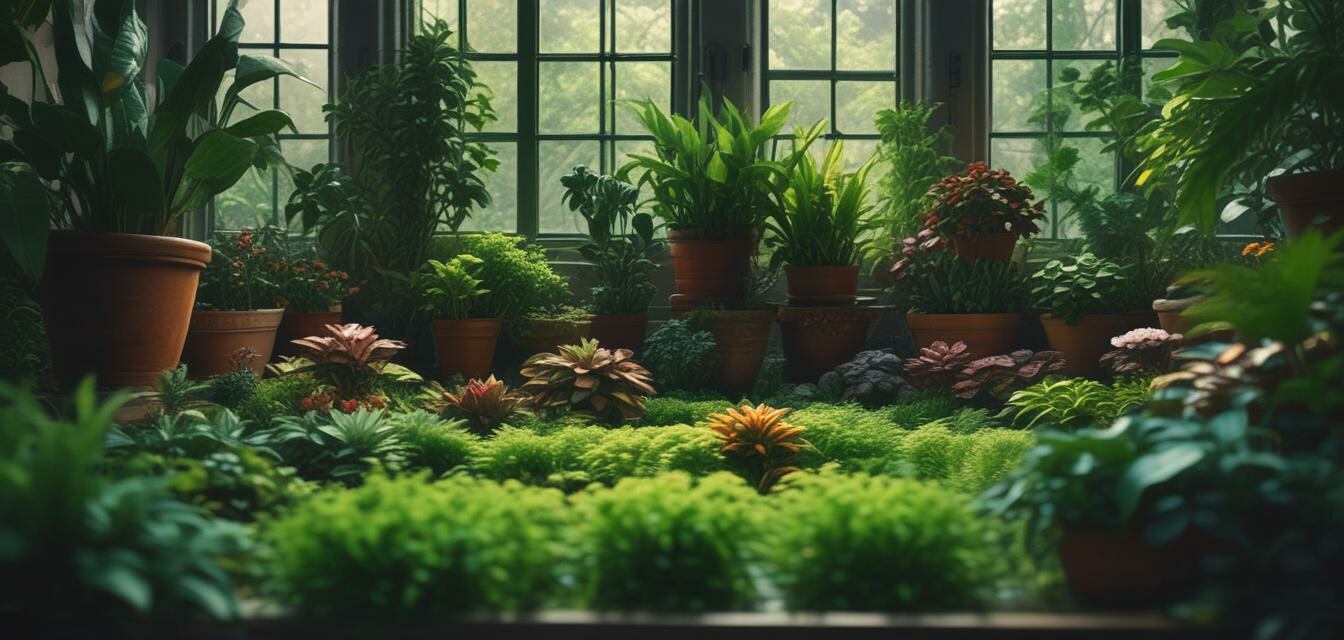
The Ultimate Guide to Indoor Plant Fertilizing
- Understand the fertilizing needs of different houseplant categories.
- Learn optimal frequency and methods for applying fertilizer.
- Recognize signs of nutrient deficiencies in your plants.
- Explore organic and synthetic fertilizer options.
Fertilizing your indoor plants is vital for their health and growth. Each category of houseplants—be it low-maintenance houseplants, air-purifying plants, or rare species—has unique fertilization requirements. In this guide, we will delve into effective fertilizing methods tailored to these specific categories, ensuring your plants receive optimal nutrients year-round.
Understanding Houseplant Categories
Different types of houseplants have various nutrient demands. By understanding these requirements, you can better cater to their needs. Here’s a brief overview of some common categories:
| Houseplant Category | Nutrient Needs | Fertilizing Frequency |
|---|---|---|
| Low-Maintenance Houseplants | Moderate nutrients; less frequent feeding | Every 4-6 weeks during growing season |
| Air-Purifying Plants | Balanced nutrients for air quality | Every 4 weeks |
| Rare and Exotic Houseplants | Hay nutrient-rich fertilizer | Every 2-4 weeks during growing season |
| Pet-Friendly Houseplants | Low-toxic nutrients | Every 6-8 weeks |
| Small-Space Plants | Growth-promoting nutrients | Every 4 weeks |
| Flowering Indoor Plants | High phosphorus for blooms | Every 2 weeks during blooming period |
Fertilizing Methods
Here are the common methods to apply fertilizer to your houseplants:
- Liquid Fertilizers: Easily diluted and absorbed by soil; ideal for a quick nutrient boost.
- Granular Fertilizers: Slow-release; steadily feeds plants over time.
- Organic Fertilizers: Naturally derived; great for sustainable gardening.
- Water-Soluble Fertilizers: Mixed with watering can; offers quick nutrient availability.
When to Fertilize Indoor Plants
Timing is crucial for effective fertilization. Always consider:
- Growing Season: Spring and summer are prime times for fertilizing.
- Plant Needs: Different plants have varying growth patterns; adjust fertilization accordingly.
- Soil Nutrient Levels: Testing soil may help determine when to fertilize.
Signs of Nutrient Deficiency
Identifying nutrient deficiencies can save your plants. Watch for:
- Yellow Leaves: Lack of nitrogen.
- Stunted Growth: Insufficient phosphorus or potassium.
- Brown Leaf Tips: Possible salt build-up from over-fertilization.
Organic vs. Synthetic Fertilizers
Choosing between organic and synthetic fertilizers depends on personal preference and plant needs:
Pros of Organic Fertilizers
- Environmentally friendly
- Improves soil health
- Less risk of over-fertilization
Cons of Organic Fertilizers
- Can be slow-release
- May lack specific nutrients
Pros of Synthetic Fertilizers
- Quick nutrient availability
- Higher concentration of nutrients
Cons of Synthetic Fertilizers
- Can lead to soil degradation
- Higher risk of over-fertilization
Tips for Successful Fertilizing
Beginner's Section
- Start with half-strength fertilizer to avoid burning roots.
- Water your plants before and after fertilization to promote absorption.
- Research specific needs for each plant type.
- Monitor your plants’ growth and adjust feeding schedules as needed.
Additional Resources
For more information about different types of houseplants and their care, be sure to check out:
- Air-purifying plants
- Flowering indoor plants
- Low-maintenance houseplants
- Pet-friendly houseplants
- Rare and exotic houseplants
Conclusion
Fertilizing your indoor plants is a crucial aspect of indoor gardening. By understanding the fertilizing needs of different houseplant categories and employing effective methods, you can ensure your plants thrive all year round. Keeping a watchful eye on their development will help prevent nutrient deficiencies and promote a vibrant indoor garden.

